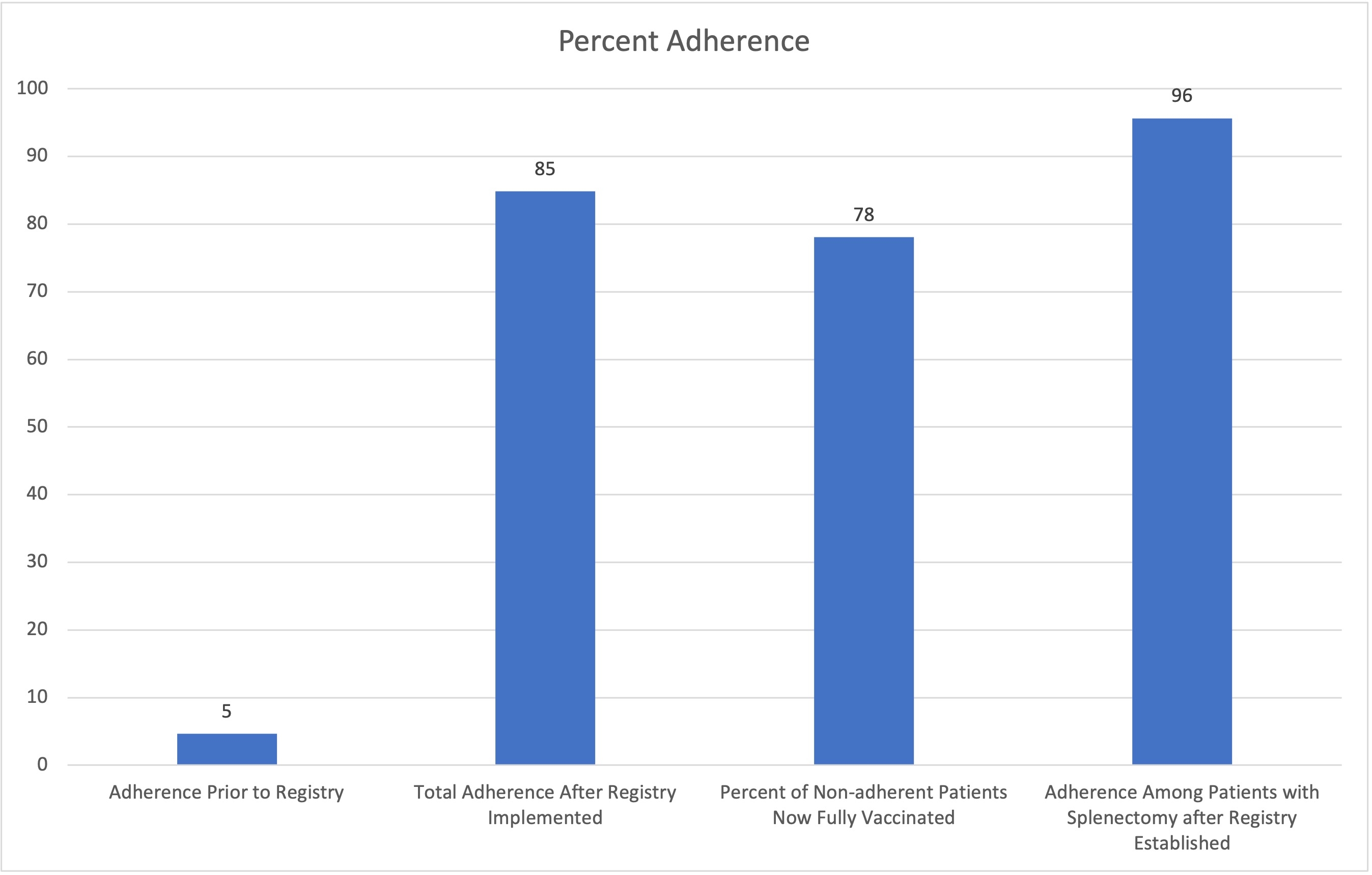Implementation of a Registry to Improve Vaccination Adherence Post Splenectomy
Luke Arney, Rebecca Foley, Lauren Scarpetti, Ricardo Bello, Giles F. Whalen, James Lindberg
UMass Chan Medical School, Worcester, Massachusetts, United States
1. OBJECTIVE
The CDC has established splenectomy vaccination guidelines based on the known risk of overwhelming post-splenectomy infection. Studies have shown improved adherence to vaccination guidelines using a splenectomy registry. Therefore, a splenectomy registry was implemented with the goal of reaching greater than 90 percent adherence to CDC guidelines.
2. DESIGN
This was a quality improvement (QI) project to enhance asplenic patients' adherence to CDC splenectomy vaccination guidelines. Data was obtained through a retrospective chart review using the electronic medical record (EMR) or prospectively during clinic appointments.
3. SETTING
Surgical Oncology Clinic at University of Massachusetts, a tertiary medical center in Worcester.
4. PATIENTS OR OTHER PARTICIPANTS
The registry included patients who underwent splenectomy from February 2016 to March 2022. A total of 104 patients were identified for inclusion in the registry. Patients were excluded from the registry due to death (13), unresectable disease (1), and cancellation of splenectomy procedure (24). The final registry included 66 patients.
5. INTERVENTION(S)
The splenectomy registry was established in November 2020. This registry functioned to track and improve vaccination adherence among splenectomy patients in the University of Massachusetts Memorial Medical Center system. Patients that were not up to date with current CDC vaccination guidelines were identified, and a request for an appointment with a nurse was entered along with the splenectomy vaccination orders.
6. MAIN OUTCOME MEASURE
The main outcome measure was adherence to splenectomy vaccination guidelines.
7. RESULTS
A total of 66 patients were included in the registry. Of these, 43 had splenectomy performed prior to November of 2020, when the registry was established, and 23 had splenectomy performed after November of 2020. Among the 43 patients who had splenectomy performed prior to the registry, only 5% were up to date with the recommended vaccinations. Among the 23 who had splenectomy performed after the registry was created, 96% were up to date with these vaccinations. Of the 41 patients who were not up to date with post splenectomy vaccination guidelines prior to creation of the registry, 32 (78%) received the appropriate vaccinations once it was established. When the pre- and post-registry patients were combined, 56 of 66 (85%) patients were up to date with the recommended vaccinations (Figure 1).
8. CONCLUSIONS
In conclusion, creation of a registry of asplenic patients is feasible and correlated with a drastic increase in adherence to splenectomy vaccination guidelines. Such a practice could help improve adherence in similar surgical oncology or trauma surgery clinics caring for patients after having a splenectomy.

Back to 2022 Abstracts
